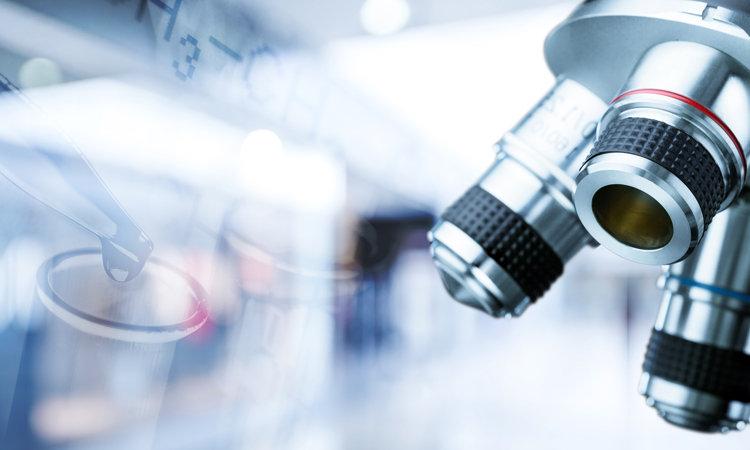ICH M9: biopharmaceutics classification system-based biowaivers
Posted: 18 December 2019 | Dave Elder (JPAG Member and David P Elder Consultancy) | No comments yet
ICH M9 biopharmaceutics classification system-based biowaivers1 is currently at step 2b and feedback from interested parties is being evaluated.2 This guideline should reach the implementation stage (step 4) during 2020. However, industry still has concerns relating to several key areas of the guidance. Here, Dave Elder summarises these ICH M9 concerns and their implications.


THUS FAR, biowaivers have been restricted to pharmaceutical equivalents and primarily to BCS class I compounds. Pharmaceutical equivalence implies the same amount of the same active substance(s), in the same dosage form, for the same route of administration and meeting the same or comparable standards. A waiver for different drug products (ie, tablets or capsules) with different salts during development should be possible, as long as the solubility of the two salts is similar, ie, both have high solubility.
The classification of the term highly soluble, based on the highest single therapeutic dose, is however contentious. For example, with Capecitabine, an anti-cancer drug, the highest tablet strength is 500mg but the highest therapeutic dose is 4 x 500mg, ie, 2,000mg. As the highest strength is acceptable for in vivo bioequivalence studies,3 it seems illogical to stipulate highest dose solely for biowaivers.
…it is not clear that the concerns regarding levels of excipients in formulation that could impact on bioavailability is fully justified”
ICH M9 currently states that, “Permeability can be also assessed by validated and standardized in vitro methods using Caco-2 cells.” However, there is concern that “limiting use to Caco-2 is scientifically restrictive as new advances mean other, improved methods with better predictions may become possible.”2
For dissolution studies, the guidance indicates that in addition to three buffers at pH 1.2, pH 4.5 and pH 6.8, the “purified water may be used as an additional dissolution medium in some regions.” However, this would be contrary to the spirit of international harmonisation. In addition, water is not a biorelevant medium; it is inconsistent, ie, subject to pH variability, non-robust, unbuffered and over-discriminatory.
ICH M9 also indicates that for dissolution studies applicants should use the paddle apparatus at 50rpm or the basket apparatus at 100rpm. In those cases where high variability or coning is observed in the paddle apparatus, then use of the basket apparatus at 100rpm is recommended. However, there is a consensus that the paddle apparatus should be the preferred apparatus as avoidance of coning by increasing paddle speed to 75rpm is well established. In addition, more flexibility in agitation rate, aligned with USP <1092> and Ph. Eur. 5.17.1 is preferred. Finally, the use of PEAK vessels for improving mixing dynamics should be considered.
The ICH M9 guidance stipulates the levels of excipients that are allowable. However, industry felt that the restriction of absorption-affecting excipient changes to pre-defined limits, eg, ±10 percent, is questionable as it does not appear to be either scientifically justified or necessary, especially for BCS class I compounds. Industry proposed that a risk-based approach is utilised “where the potential of an excipient change to impact absorption is mechanistically assessed on a case-by-case basis.” Many drugs showing absolute absorption values in the region of 50–84 percent are classified as low permeability, ie, BCS class III drugs, but they still have good in vivo permeability properties. As such, it is not clear that the concerns regarding levels of excipients in formulation that could impact on bioavailability is fully justified; especially as permeability and solubility act in a synergistic manner.4 There was a concern that this could lead to unnecessary in vivo BE studies as a result of small differences in compositions of excipients between generic and reference drug products.
In conclusion, although industry is supportive of the ICH M9 guideline, there are key parts relating to pharmaceutical equivalents, solubility, permeability, dissolution and excipients that are still areas of concern.
About the author
Dave Elder has nearly 40 years of service within the pharmaceutical industry at Sterling, Syntext and GlaxoSmithKline. He is now an independent GMC consultant. He is a visiting professor at King’s College, London and is a member of the British Pharmacopoeia. He is a member of the Joint Pharmaceutical Analysis Group (JPAG) and the Analytical Division Council of the Royal Society of Chemistry.
References
- Biopharmaceutics Classification System-based Biowaivers, Step 2b. 6 August 2018. EMA/CHMP/ICH/493213/2018.
- Overview of comments received on ICH guideline M9 on biopharmaceutics classification system based biowavers. (EMA/CHMP/ICH/493213/2018). 15 February 2019. EMA/118938/2019.
- European Medicines Agency. Committee for Medicinal Products for Human Use (CHMP), 2010. Guideline on the investigation of bioequivalence. 2010. http://www.ema.europa.eu/docs/en_GB/document_library/Scientific_guideline/2010/01/WC500070039.pdf. Accessed 03 Dec 2019.
- Butler JM, Dressman JB. The developability classification system: application of biopharmaceutics concepts to formulation development. Pharm. Sci. 2010;99(12): 4940-4954.
Issue
Related topics
Biopharmaceuticals, Dissolution Testing, Excipients, Formulation, Lab Equipment, QA/QC









